
Rings of Power: true to Tolkien’s vision or ‘woke’ distortion?
Tolkien was an enormous part of my world when I grew up. I was and am a Tolkien nerd. But in those years, his works lived a sub-culture and very few knew about the Lord of the Rings and fewer still bothered to read the books. That was, of course, before Jackson’s movies made the Lord of the Rings a global phenomenon.
My version of Tolkien is the book version, which as is well-known, Tolkien fans regard as the ‘gold-standard’ for any portrayal in film. Jackson’s films were a breakthrough in presenting Tolkien’s world – but the gratuitous action and violence added to the scripts represents crass commercialisation – for a mass market that has come to expect such portrayals. The storm that has broken out around the Rings of Power however takes disputes about the Tolkien heritage to another level. There is always room for legitimate debate about whether Tolkien is being lived up to, but one attack on the Rings of Power has been particularly odious. The series portrays black and coloured actors in roles previously reserved for white actors. It also prominently foregrounds strong female characters.
Such choices have seen ‘Rings of Power’ subjected to a tirade of claims and counterclaims about whether ‘woke’ ‘political correctness’ is destroying Tolkien’s vision. Here are some of the articles that make this claim. “When ‘wokeness’ comes to Middle-earth: Why some say diverse casting ruins the new ‘Lord of the Rings’ series” (CNN, 5 September 2022) or “‘The Rings of Power’ is Too Woke, According to Reddit” (undated) or yet again “Tolkien’s Middle-earth has been colonized by a media giant and its woke gremlins” (Mercatornet, 28 September 2022). These are just a small sampling of a storm, largely around the colour-blind casting that the makers of Rings of Power chose.
But as Craig Franson points out (see below) this framing isn’t accurate. A more accurate framing of what has occurred is that the release of Rings of Power has been targeted as part of a racist campaign. That racist campaign has unfortunately been quite successful in propagating its implicit and explicit messages.
The actors who played the Hobbits in Jackson’s LOTR bring the issue to its essentials. This is about jobs and who can have them. Locking non-white actors out of fantasy roles is racial discrimination. They rightly expressed their support for the actors of colour acting in the new series. Things became so bad that the cast of Rings of Power had to put out a joint statement condemning the racist trolling of their cast-mates and fans of colour.
Racist trolling has of course no justification. Beyond that, if we need to engage in discrimination to represent the LOTR then perhaps we should just leave it on the shelf. But of course, we don’t need to do so. Colour blind casting is now becoming commonplace and it is leading to great new productions, including period pieces, for instance in the excellent new production of Les Miserables in which the role of Javier is played by the actor David Oyelowo. Great acting makes for great productions and, for example, the actors of colour who play Arondir (Ismael Cruz Córdova) and the Queen Regent Mìriel (Cynthia Addai-Robinson) in Rings of Power do a fantastic job.
Certainly, racists are able to project their vision of the world onto LOTR. But they see what they want to see. Not only that – they want us to see it that way too – for it can be used to propagate their cause (as I discovered on stumbling across one particularly offensive page which does most of the following). Orcs are not metaphors for moral darkness – they can be re-purposed as representations of darker skinned fellow human beings. The struggles of the heroes of Middle Earth do not represent the values of friendship and a rejection of lust for power and tyranny over others – they can represent a defence of the West against the nameless ‘other’ – the hordes of ‘foreigners’ threatening to overwhelm Western Civilisation and its colonial ‘achievements’. Of course, drawing such parallels to make a case against, for example, immigration, is inherently racist.
Even Fascists have used LOTR as a tool for their ideology. “Hobbit camps” in Italy were recruiting grounds organised used by Fascist parties to recruit Italian youth: How ‘Hobbit Camps’ Rebirthed Italian Fascism . Moreover, LOTR is not alone. In current times White Supremacists deliberately target teenagers in online spaces for recruitment. The topics that teenagers are interested in like LOTR, fantasy in general, gaming are great recruiting grounds. The podcast American ID by Craig Franson (an expert in British literature and Tolkien) and Dani Holtz (historian) devotes a series of episodes to exploring how a racist campaign amplified the messaging of racist trolls against Rings of Power was undertaken, including its deeper history. (from September 2, 2022 episode onwards).
How LOTR is anti-racist
As you’ll have gathered, I disagree that Tolkien would have any sympathy for racist thinking. Moreover, I think he would have hated it. That’s the case I’ll make here. But let’s turn to the books themselves to make it. What did Tolkien want us to know or feel through his words? Fair warning, plot spoilers follow.
Explicitly dark skinned humans (as opposed to other mythical races) only rarely appear in the Lord of the Rings but there is one notable occasion on which they do. Sam Gamgee, who is decidedly parochial in his upbringing but is learning much about the larger world, stumbles over the corpse of a soldier from Haradrim who has just been killed by Faramir and his troop.
“It was Sam’s first view of a battle of Men against Men, and he did not like it much. He was glad that he could not see the dead face. He wondered what the man’s name was and where he came from; and if he was really evil of heart or what lies or threats had led him on the long March from his home; and if he would not really rather have stayed there in peace.”
From the Two Towers
Tolkien lives in a racist world (he grew up in the era where ‘racism’ was taught as ‘science’). He is undoubtedly influenced by it, as we still are today. Yet his words are carefully crafted for such a world. Tolkien’s words are also those of a man who has personally known war. The message is clear enough. Men ought not kill each other and Sam saw not a ‘creature’ but a fellow being with whom, in other circumstances, he might have been a friend. Tolkien is a skilled storyteller. He does not lecture us about racism. He lets us see through the eyes and heart of Sam. And in seeing and feeling, we understand.
The LOTR movie represents this incident by placing Sam’s thoughts in Faramir’s mouth.
Now our assumption in this scene (driven largely by cinematic representations of LOTR) is that we have a white hobbit looking at the body of a someone of colour. Hobbits were in fact of diverse colours and in the main they were brown skinned. The opening pages of the Hobbit state the following.
“[Hobbits have] … warm brown hair … ; have clever brown fingers ; good-natured faces …”
From the Hobbit
The colour of their faces isn’t here mentioned, but it is natural to assume that their faces are the same colour. In LOTR, Tolkien expands on his description of Hobbits.
On the stairs of Cirith Ungol Gollum finds Sam and Frodo. Sam’s “brown hand” is on Frodo’s “white forehead”.
In his discussion with Barliman Butterbur Gandalf describes Frodo as “fairer than most” when trying to distinguish him from other Hobbits the barman might meet. In other words – most hobbits are darker.
This variation of colour among Hobbits is more explicit in “Concerning Hobbits” which opens the Lord of the Rings. In a discussion of the origin of Hobbits, the prologue notes three kinds of Hobbits among whom are Harfoots who “are browner of skin”. Further:
“[Harfoots] were the most normal and representative variety of Hobbit, and by far the most numerous. They were the most inclined to settle in one place, and longest preserved their ancestral habit of living in tunnels and holes.”
LOTR, Prologue
The other two kinds of Hobbits (the Fallohides and the Stoors) were lighter of skin, particularly the Fallohides, who are least numerous. The Hobbit communities after a migration from the east settled together in the Shire and became one mixed people.
What Tolkien really thought about race mixing
The idea of “race mixing” is of course anathema to racists. Sadly such racist views are still not consigned to the pages of history.
But for Tolkien, racial mixing and friendship among races represents the best of his Middle Earth. Some of these tales of racial mixing are told in the Silmarillion and they occur so frequently in key heroes that they constitute a Tolkienesque paradigm.
The first such heroes to mention are Beren and Luthien (human and elf) in the First Age of Middle Earth. Their love is thwarted by Luthien’s prejudiced father Thingol (king of a hermit kingdom) who would not see his daughter married to a human. Thingol demands that Beren bring him a Silmaril (a magical jewel carrying sacred light) which was stolen by the then Dark Lord, Morgoth. Beren and Luthien undertake the quest together, which over the course of series of adventures eventually leads to their marriage when the quest is fulfilled, but after great suffering. These heroic figures are transgressive of the norms of their mythical communities: loving and marrying across racial lines.
Tuor and Idril are another human-elf couple. Also in the Silmarillion, on this occasion Idril’s elf father supports the union as he recognises Tuor’s inherit merits as an individual, and does not see a problem in his elvish daughter marrying a human.
Their half-elven child is Earendil. He is born in a time when elves and men face extermination by the expanding forces of Morgoth. He marries Elwing, a granddaughter of Beren and Luthien. Earendil and Elwing undertake a hopeless mission to seek help from the Valar across the sea. They succeed, literally saving the world. They are recognised by being raised to heaven where they carry the evening star – the last of the Silmarils. The star represents what is most sacred in Middle Earth and source of hope in dark times.
Thousands of years later Aragorn and Arwen are a further mixed-race couple who come together to help save the world. Their children become the rulers of the restored Kingdom of Gondor and Arnor. Like Beren thousands of years earlier, the human Aragorn will only be good enough for Elrond’s elven daughter if he achieves the impossible. He must become King of both Arnor and Gondor and destroy Sauron. Despite the unreasonableness of the demand, Aragorn delivers.
Another mixed race marriage is that of Faramir (Gondorian noble) with Eowyn (daughter of Rohirrim royalty). In the racial politics of Gondor (influenced by Numenorian ideas about racial purity) such unions are frowned on. Nonetheless they represent the future and their union is celebrated.
Racial Purity, Colonialism and the Numenorians
Speaking of the Numenorians, who are of course a major plot line of the Rings of Power, issues of race also arise. Part of their ‘turning away’ from the Valar (which ultimately ends in the sinking of their island and destruction of their people) is their rejection of their historic friendship with the Elves. They increasingly turn to pride in themselves, viz a viz all other peoples of Middle Earth, building a colonial empire which becomes increasingly oppressive and exploitative. Lust for power is of course the central evil of Tolkien’s world and Numenor is one model of that evil. Putting aside Morgoth and Sauron, Numenor is the primary colonial power in the story of Middle Earth. The initial hopes that the more technologically advanced ‘sea-kings’ would be deliverers are crushed as instead the Numenorians focus on pursuing their self-interests in relation to the ‘lesser men’ they came to rule.
“… after Minaster the [Numenorian] Kings became greedy of wealth and power. At first the Numenorians had come as teachers and friends of lesser Men afflicted by Sauron; but now their havens became fortresses, holding wide coastlands in subjection. Atanamir and his successors levied heavy tribute, and the ships of the Numenorians returned ladened with spoils.”
LOTR, Appendix A
Tolkien lived in the declining years of the British Empire – its self-image as a ‘civilising force’ for ‘lesser peoples’ is something he would have heard frequently. He is not naive of the problems of ‘western civilisation’ and its colonial enterprises. Numenor falls victim to its own pride and lust for power.
The decline of Gondor in the third age has similar elements (largely discussed in Tolkien’s extensive appendices). A civil war breaks out between supporters and opponents of a mix raced king who is Gondorian on his father’s side but a Northman (i.e. related to the people of Rohan) on his mother’s side. The conflict with those clinging to ‘racial purity’ brought great destruction on Gondor.
Tolkien despised proponents of racial purity. We have to go outside the books themselves, but the story is well known. When he was working on a German translation of his work, the German publishers made enquiries about Tolkien’s racial stock.
To his English publisher, Tolkien wrote the following.
“I must say the enclosed letter from Rütten & Loening is a bit stiff. Do I suffer this impertinence because of the possession of a German name, or do their lunatic laws require a certificate of arisch origin from all persons of all countries? Personally, I should be inclined to refuse to give any Bestätigung (although it happens that I can), and let a German translation go hang. In any case I should object strongly to any such declaration appearing in print. I do not regard the (probable) absence of all Jewish blood as necessarily honourable; and I have many Jewish friends, and should regret giving any colour to the notion that I subscribed to the wholly pernicious and unscientific race-doctrine. You are primarily concerned, and I cannot jeopardize the chance of a German publication without your approval. So I submit two drafts of possible answers.”
His longer draft to the German publishers read as follows:
“Thank you for your letter. I regret that I am not clear as to what you intend by arisch. I am not of Aryan extraction: that is Indo-Iranian; as far as I am aware none of my ancestors spoke Hindustani, Persian, Gypsy, or any related dialects. But if I am to understand that you are enquiring whether I am of Jewish origin, I can only reply that I regret that I appear to have no ancestors of that gifted people. My great-great-grandfather came to England in the eighteenth century from Germany: the main part of my descent is therefore purely English, and I am an English subject—which should be sufficient. I have been accustomed, nonetheless, to regard my German name with pride, and continued to do so throughout the period of the late regrettable war, in which I served in the English army. I cannot, however, forbear to comment that if impertinent and irrelevant inquiries of this sort are to become the rule in matters of literature, then the time is not far distant when a German name will no longer be a source of pride. Your enquiry is doubtless made in order to comply with the laws of your own country, but that this should be held to apply to the subjects of another state would be improper, even if it had (as it has not) any bearing whatsoever on the merits of my work or its sustainability for publication, of which you appear to have satisfied yourselves without reference to my Abstammung.”
He was to later write to his son Michael how much he despised “that ruddy little ignoramus Adolf Hitler”. His own additional personal grievance with Hitler was the damage Hitler did to what Tolkien himself held dear.
“Ruining, perverting, misapplying, and making for ever accursed, that noble northern spirit, a supreme contribution to Europe, which I have ever loved, and tried to present in its true light”
Cited in On the Time J.RR. Tolkien Refused to Work with German Publishers
In the event, a German version of LOTR did not appear until 1957. Tolkien not only despised fascist and racist thinking. He was willing to put his money where his mouth was. The incident reminds us that the worlds of literature and politics can intersect, as they are doing now again in respect of LOTR. Moreover, he was a man who had devoted his life to a study of the great literature and folklore of northern Europe which was created many centuries before him. It was something he loved dearly and which influenced him profoundly. He draws from it what he called a “northern spirit” which he saw as totally the opposite of the corrupting ideas of racists like Hitler. It is a comment that returns us to the values that are at the heart of the Lord of the Rings. Those values are not lust for power and domination over others nor racial prejudice, exclusiveness or hatred.
Friendship Across Racial Divides in Middle Earth
The racial politics (of the mythical races of Middle Earth) is often not far from the surface in Tolkien’s narrative. Here again we can see Tolkien’s inclinations and the attention he gives to the issue. Tensions between the various races and polities are a common theme. Tolkien,\ had no problem at all bringing together multi-racial teams to solve problems. In fact, Tolkien deliberately does so. The leading characters of LOTR considered it essential. The Fellowship of the Ring is composed to represent many races of Middle Earth. The Council at which it is discussed sees some of the ‘racial tension’ between the Dwarves and Elves. Historical tensions which have to be put aside in a common cause.
The elven and dwarvish rivalry exemplified at the meeting becomes a major theme of the series in the unlikely friendship of Legolas and Gimli who overcome historical racial grievances, hostility and personal prejudice to become the closest of friends. By the end of the LOTR they come to appreciate each other’s culture. Legolas teaches Gimli about the beauty of trees and forests and Gimli teaches Legolas to love stone. The strength of their friendship is movingly represented in the Appendices to LOTR. Long after the events portrayed in LOTR when the long-lived Aragon aged and died, Legolas and Gimli could not bear to be parted by death.
“In this year on March 1st came at last the Passing of King Elessar [i.e. Aragorn]. It is said that the beds of Meriadoc and Peregrin were laid beside the bed of the great king. Then Legolas built a grey ship in Ithilien and sailed down Anduin and so over Sea; and with him, it is said, went Gimli. the dwarf, And so an end was come in Middle-earth of the Fellowship of the Ring.”
LOTR, Appendices
It is also worth noting that it was Galadriel’s act of kindness towards Gimli, transgressing her own people’s hostility to the dwarves, that allowed Gimli to see elves in a new light.
We may think too about the particular Hobbits who journey with Frodo. The Hobbits around them look on ‘outsiders’ with great suspicion, but Frodo takes great pleasure in being identified as an “Elf friend”. Sam too wants to see elves. Hobbits for a mission like theirs can’t be weighed down by the parochial prejudices of the villages they come from.
At the beginning of the Lord of the Rings parochialism is on full display in the Green Dragon, an inn where a group of hobbits have gathered and are discussing the strange doings and affairs of Bilbo Baggins and his family. Apart from his association and socialising with foreigners and strange folk, a key part of his queerness is the fact that Bilbo’s father married outside his village of Hobbiton to the “queer folk” near the Brandywine river. Ted Sandyman, a miller who takes part in the conversation, is particularly hostile to Bilbo, and we shall return to him below. But we may note that Bilbo Baggins too is from a racially mixed marriage (in the parochial Hobbit world).
The book the Hobbit has a racial odd man out: it is Bilbo Baggins himself, who is introduced to the dwarves by Gandalf. They were not impressed “more like a grocer than a burglar”. In fact, Bilbo’s Hobbit abilities in stealthy movement and quick disappearance gave him a distinct advantage as a burglar, and Gandalf was counting on his Tookish ancestry, which he expected to come out. In the end, Bilbo plays a seminal role without which the dwarves’ mission would never have succeeded.
At the end of the Hobbit, armies of dwarves and men and elves are facing off against each other in a struggle for gold. Gandalf intervenes to bring them together so that they can avoid annihilation by a rapidly approaching orc army (also after the gold). Even non-humans play their part. Beorn the ‘skin-changing’ bear man and the eagles, who arrive in the nick of time and turn the tide.
Bilbo and Thorin, who had fallen out, are reconciled and Thorin is content that he is able to have a final parting with a friend he loves dearly. What he sees in Bilbo are typical Hobbit traits.
“No!” said Thorin. “There is more in you of good than you know, child of the kindly West. Some courage and some wisdom, blended in measure. If more of us valued food and cheer and song above hoarded gold, it would be a merrier world. But sad or merry, I must leave it now. Farewell!” Then Bilbo turned away, and he went by himself, and sat alone wrapped in a blanket, and, whether you believe it or not, he wept until his eyes were red and his voice was hoarse. He was a kindly little soul.
From, the Hobbit
Another profound friendship across racial lines.
Tolkien Despised Totalitarianism
To learn, some years ago, that Tolkien’s world had been co-opted for fascist bootcamps was a little shocking. It is likely he would have found it an outrage.
The values that Tolkien’s characters are fighting for can already be discerned in what has been discussed above.
Yet Tolkien’s views on ‘governance’ come into focus perhaps most clearly in the Shire itself. It is the ‘ordinary’ world from which the hobbits depart. Fantastical things tend to happen outside the Shire. Yet when the hobbits come back after their adventures, they find things have changed. Thugs have taken over the shire. They have pinned up rules and new bands of ‘sheriffs’ are marching off any resisting hobbits into lock ups. They also have taken control of goods which they collect and distribute (leaving the inhabitants hungry). In short, a little totalitarian state (under the ultimate control of Saruman) has taken over their homeland. Starting with tearing down a billboard of rules, the hobbits raise their countrymen and after a brief battle restore their traditional freedoms, driving off Saruman’s thugs.
Ted Sandyman, who appeared at the beginning of the book, is portrayed during this episode. He is no longer the miller but has been caught up in the ‘orcish’ totalitarian state. Where his father had owned the mill he now, dirty and unkempt, tends to a new bigger mechanised mill and despite his enslavement he is a partisan of the interests of his new overlords.
Totalitarianism and the lust for power is at the heart of the ‘evils’ that Tolkien’s masterwork is about. Sauron and Morgoth of course do not rule over free peoples. The reason they are resisted is that to join the ‘evil team’ is to become a slave. Although it is not front and centre in the books, the orc armies of Sauron are fed by innumerable human slaves who work further south in Mordor. Sauron would torture the Hobbit people if he ever gained power over them, simply because one of them withheld the ring from him for a time. The ring itself is the ultimate symbol of lust for power over others.
In addressing one issue, it is easy to obscure others. We shouldn’t imagine that Tolkien saw the world the same way that the 21st century does. He was profoundly religious. His Catholicism profoundly affected the content of LOTR. “Orcishness” in the real world was the kind of development that substituted ugly factories for a beautiful meadow. The destruction of the “party tree” was a particular sacrilege that needed to be amended by Sam in the final pages of LOTR. Tolkien’s world, for much of his life, was a world in which European nations still kept the rest of the world under colonial domination. A key driving force in his literary works was his desire to create a ‘founding’ mythology for the English people – paralleling the kinds of material he found in Scandinavian folklore. Most of his models came from that mythology and from European history.
But it’s clear enough. Tolkien was no racist. His message is profoundly anti-racist. He would, I think, be appalled by attempts by racists to instrumentalise his works for racist goals, as for totalitarian ones, for that matter. They are a profound exploration of what is truly of value in life.
So, when the Rings of Power took an anti-racist stand in casting its characters, there is zero conflict with Tolkien’s worldview.
I am a Tolkien nerd from way back. LOTR was my book. It still is. It belongs to everyone. Racists don’t get to define Tolkien’s heritage as theirs.
#youareallwelcomehere
Image
Series promotional image. Copyright Amazon.com.

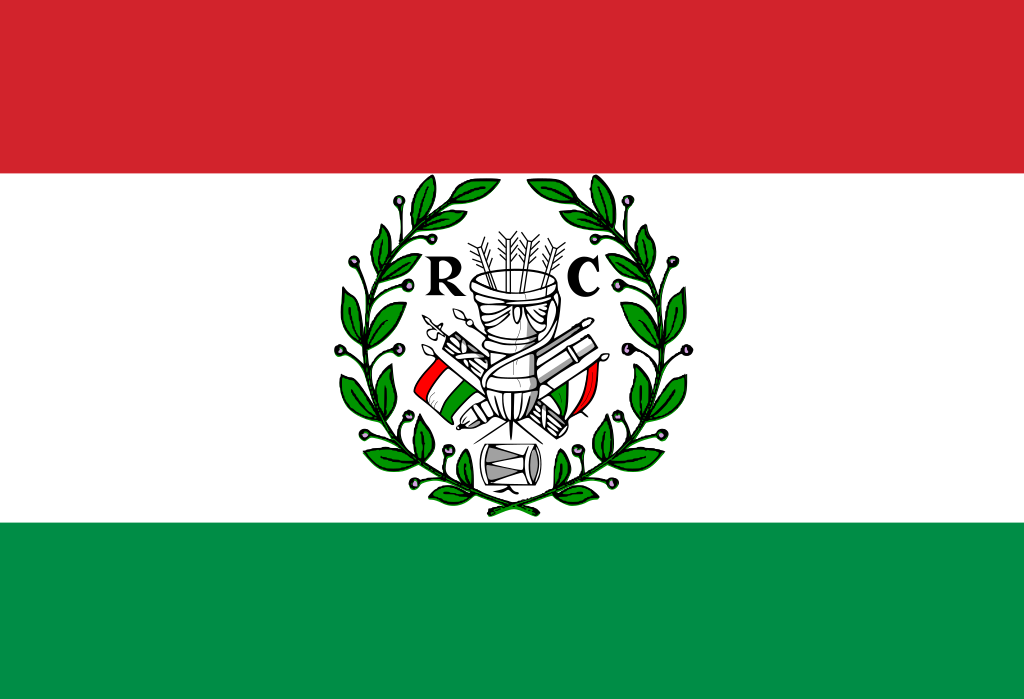

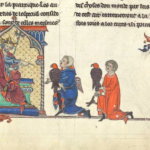


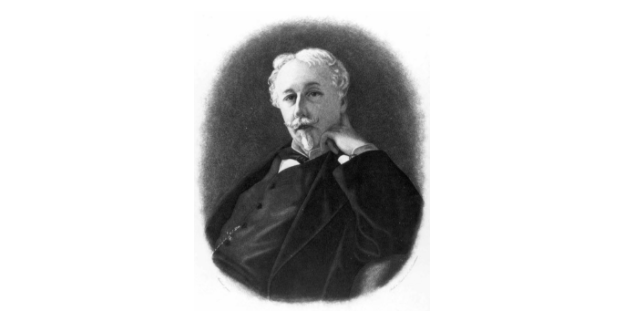
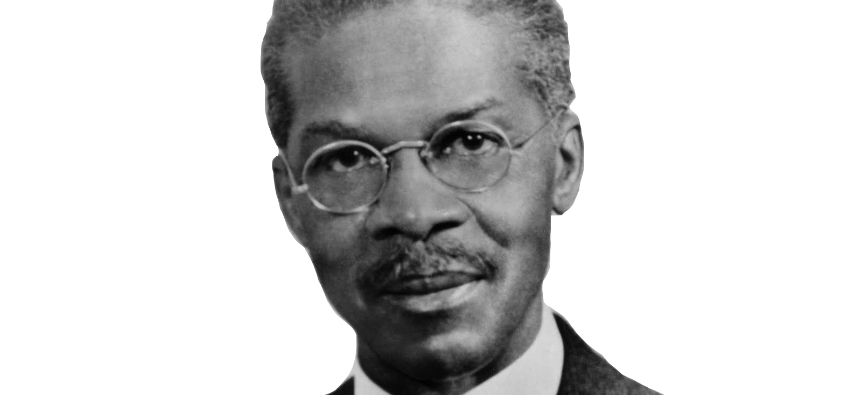
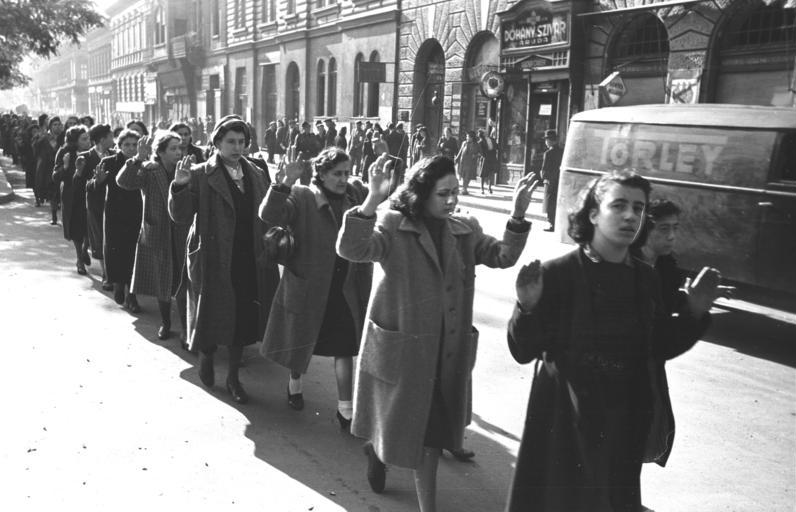
2 Comments
Michael Curtotti
Thanks for being in touch Jackson, you have a point about the portrayal of elven leadership, I wondered about that too – it did stick out a bit in the context of the show as a whole. On families and phenotypes I think you’re making the assumption that all families are racially homogenous. That isn’t true everywhere and it’s less and less the case these days and a parent may well not ‘look’ like their child although of course they carry that parent’s heritage. Turning to Rings of Power – not explored yet – but there is some speculation that Arondir might be Theo’s dad. https://www.gamespot.com/articles/lord-of-the-rings-rings-of-power-whats-going-on-with-theo/1100-6507081/#:~:text=Theo's%20father%20is%20a%20bit,dad%2C%20which%20is%20certainly%20plausible.
Jackson
My question is rather banal and though about race is more concerned with the affordances of storytelling. I have no issue with diversifying representation in Middle Earth on the big screen. My confusion of their execution stemmed from the race bending of related characters and the preponderance of white, male actors in roles of authority. The latter point largely speaks for itself – why are Elven leaders all white if the cast is race blind? Why are the only POC actors in power women, and either powerful informally or misguided in their intuitions? Why is the future line of Gondorian kings still white? The former is a bit more odd because there’s nothing materially wrong. Actors of any background can play any part so long as they embody the intended emotionality, and all the actors in RoP did well with the somewhat meager script they received in my opinion. But storytellers often must use certain affordances to create the verisimilitude of the world, and family members resembling one another phenotypically is often one employed. It’s a racist conception but not disconnected from our experience noticing the phenotypical similarities we associate to the fictions of race between parents and children. What explains this difference within this new production of Middle Earth? I would’ve preferred that question to have received an answer, such as that evolution does not exist in Middle Earth and therefore all phenotypical variety in mortal species needed exist at this incipient point in time, or at the least a lampshade by the authors of the confusion – just rip the joke from the first Kung Fu Panda before they went and made an entire silly movie about Po’s panda family, ugh – so that while I had to connect characters by relation with greater effort in my mind that it felt apt to the world as constructed? Again, I acknowledge this is a racist conception, but as an anthropologist BA it created a tiny splinter of dissonance about the world’s cohesion for my brain that family members didn’t look alike and there appeared to be no reason for its diversion from our reality